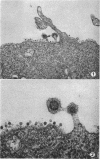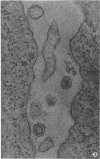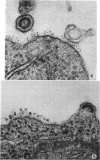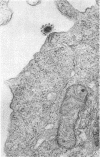Abstract
The hybrid-antibody method of locating cell-surface antigens in electron micrographs, with either ferritin or southern bean mosaic virus as the visual marker, was applied to the cells of a transplanted murine leukemia induced by Gross virus. The two antigens studied were (a) G (Gross) cell-surface antigen, which is a specific component of cells infected with Gross virus and is identified by cytotoxic hyperimmune C57BL/6 antiserum, and (b) H-2 antigen, which is the major histocompatibility determinant of the mouse.
Both antigens were represented on the cell surface in discrete circumscribed areas. Neither antigen was present on free Gross virions or on virions in the process of budding from the cell surface.
Thus G cell-surface antigen identified by C57BL mouse cytotoxic antiserum is not a constituent of the viral envelope, which accounts for the poor virus-neutralizing capacity of such antibody.
Virus maturation may take place preferentially at regions of the cell surface where H-2 and G antigens are absent, for budding was seldom seen in H-2+ sectors and never convincingly in G+ sectors.
In other experiments, serum from an untreated NZB mice aged 16 months gave labeling of the virion only, showing that this mouse strain, in contrast to C57BL and other strains, forms antibody to envelope antigen of Gross virus.
Full text
PDF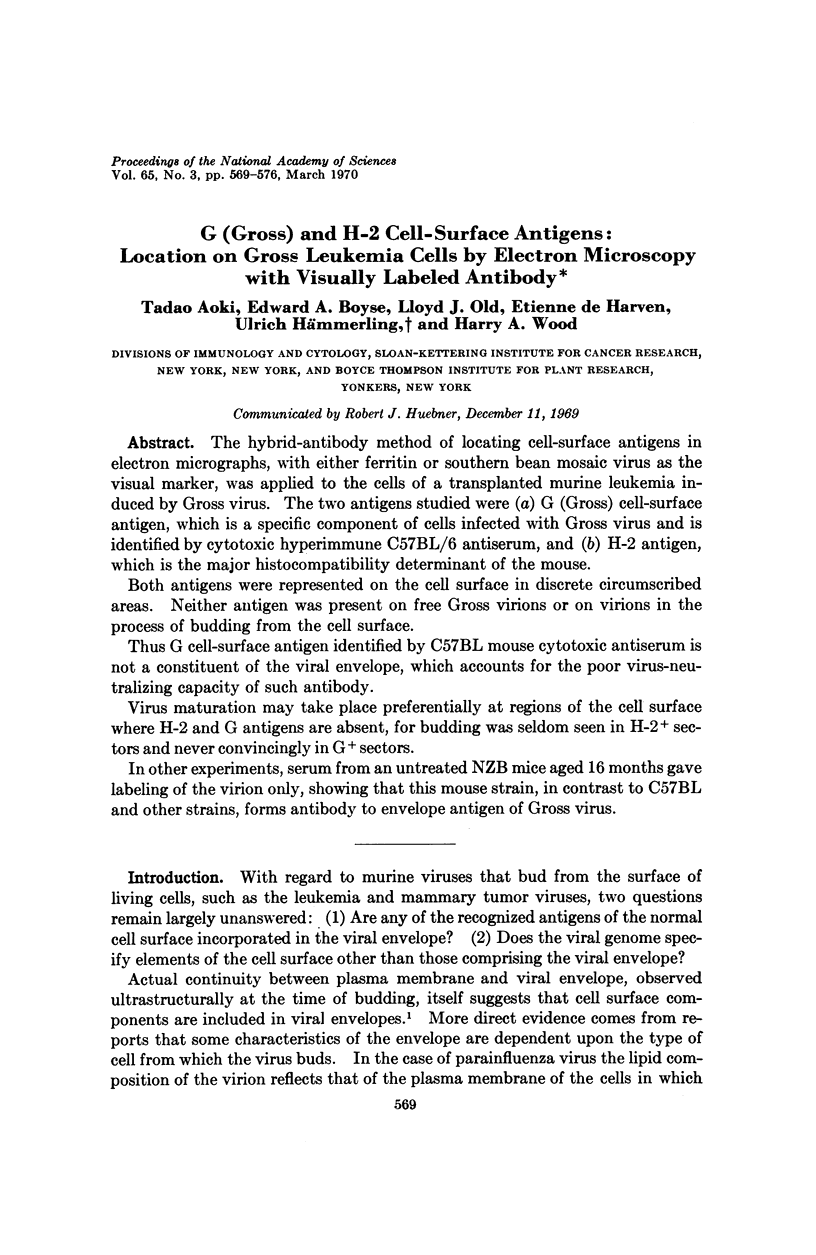
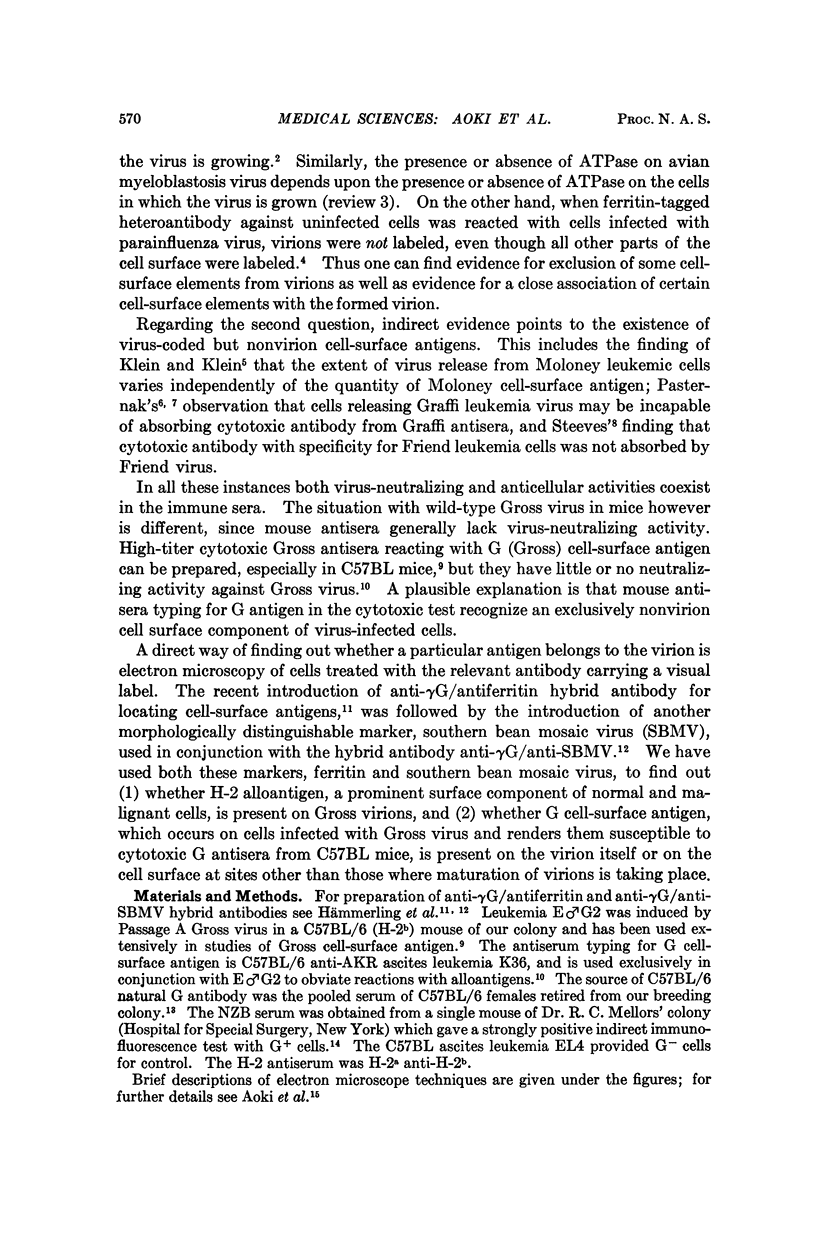
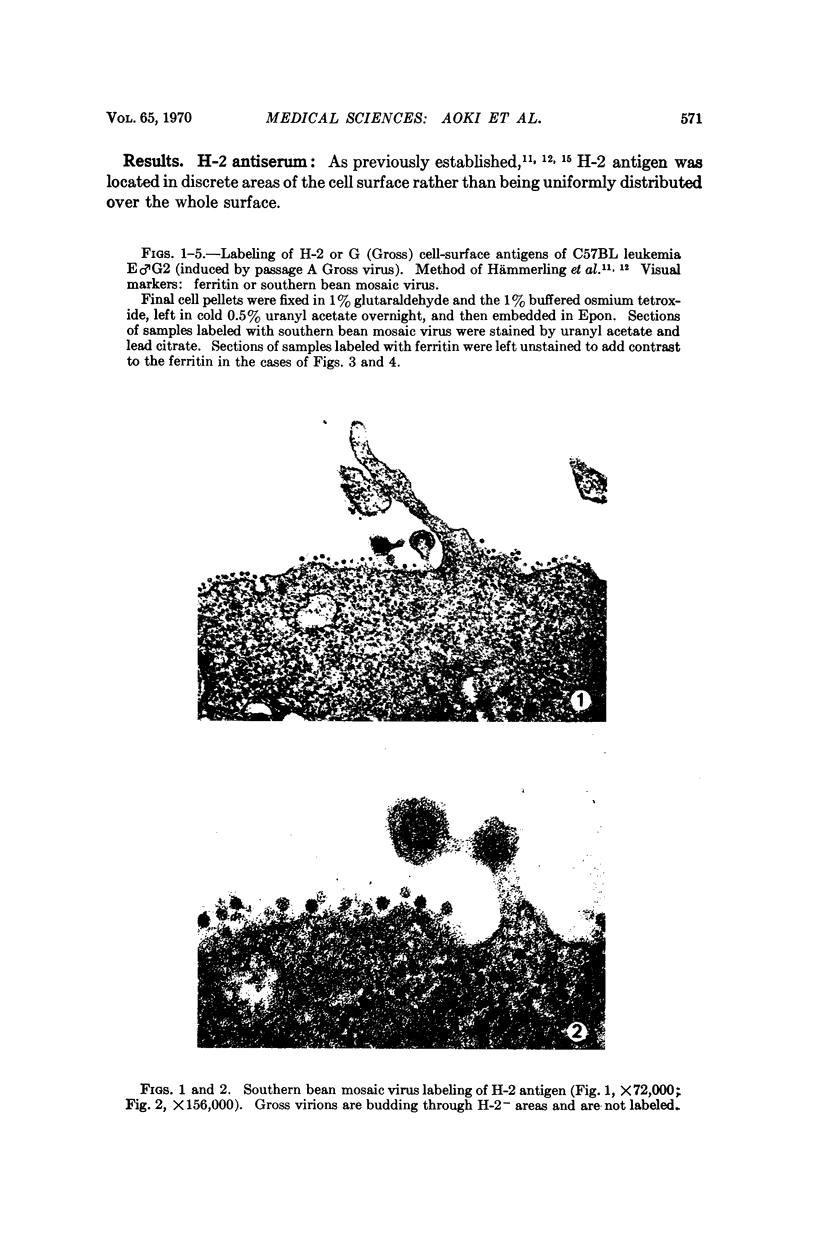
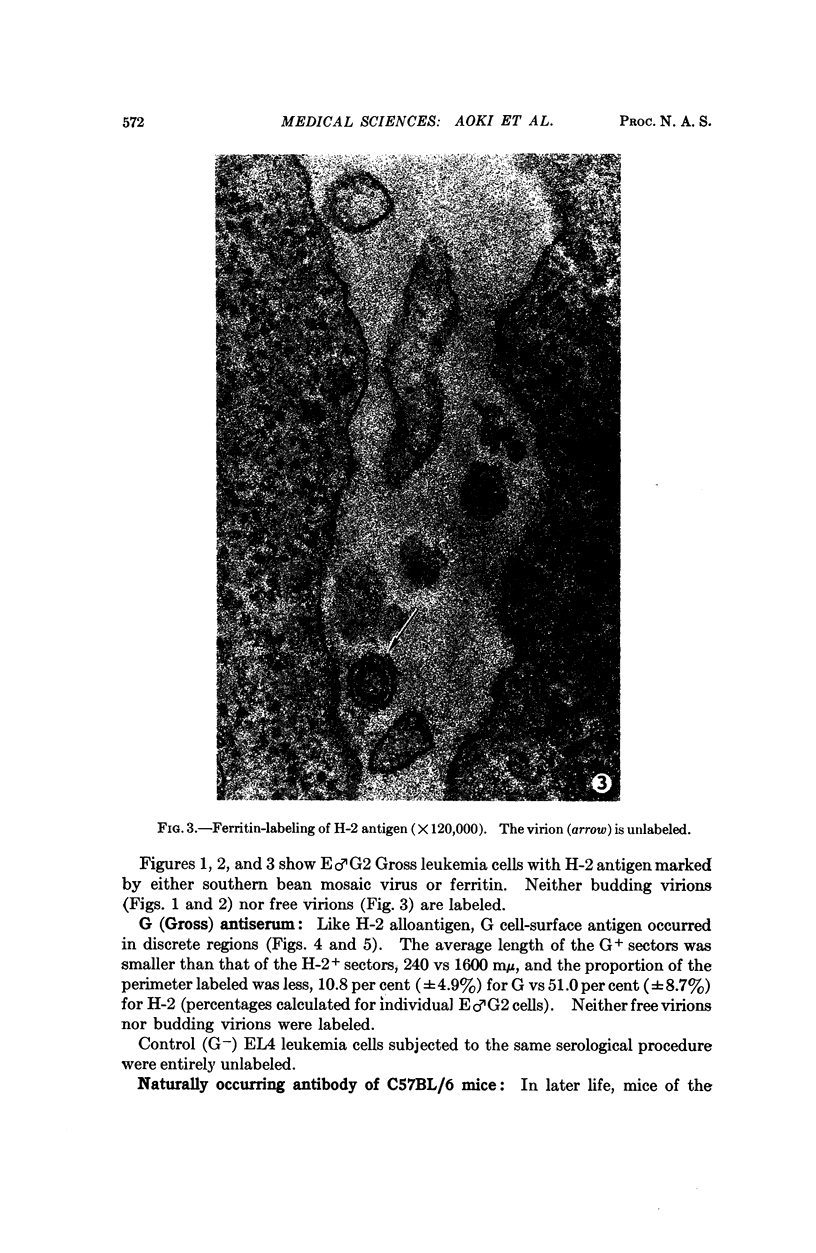
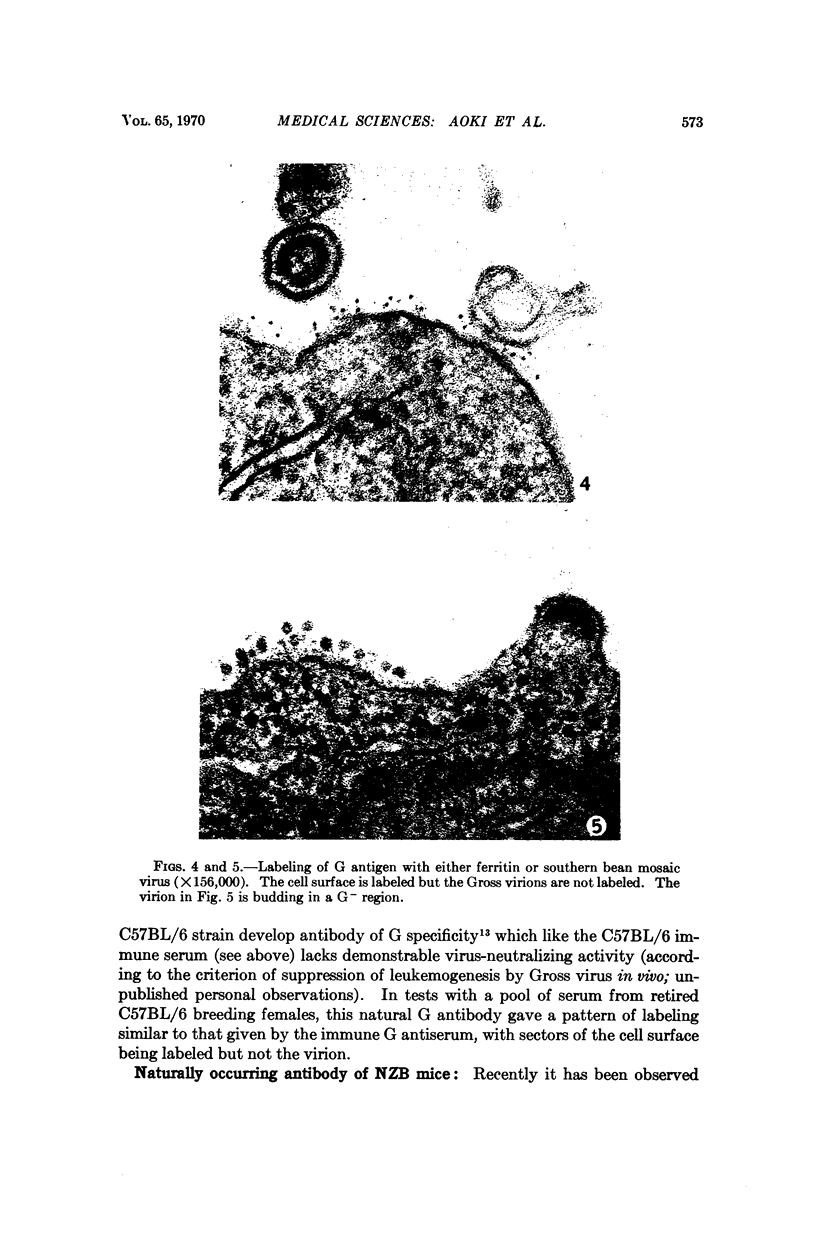
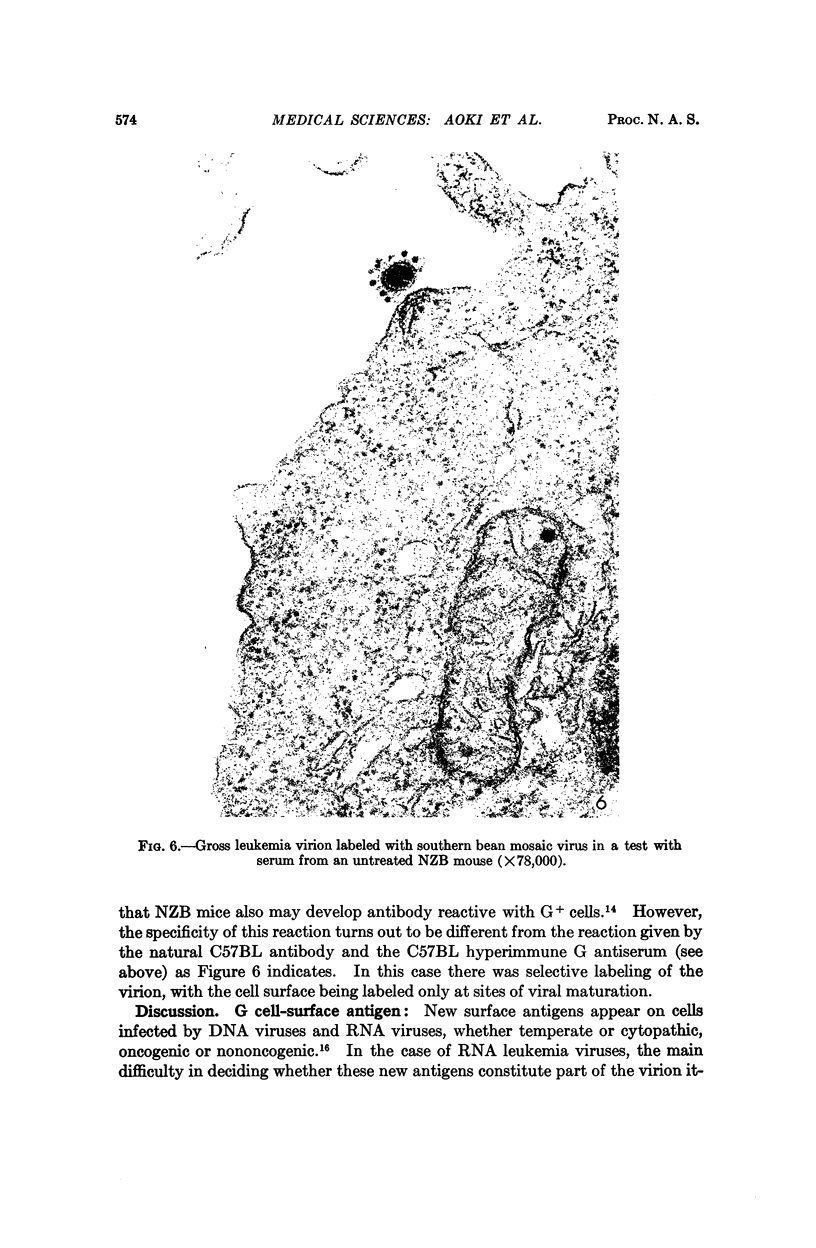
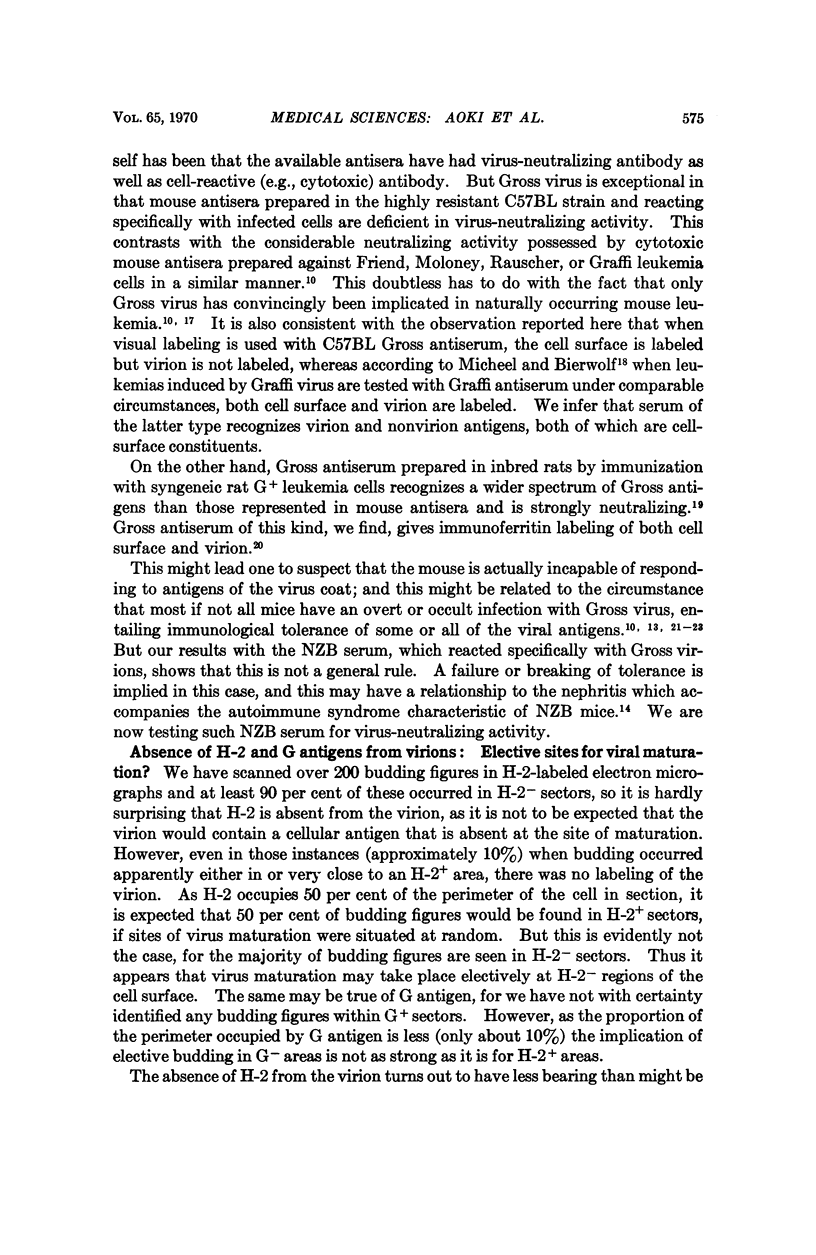
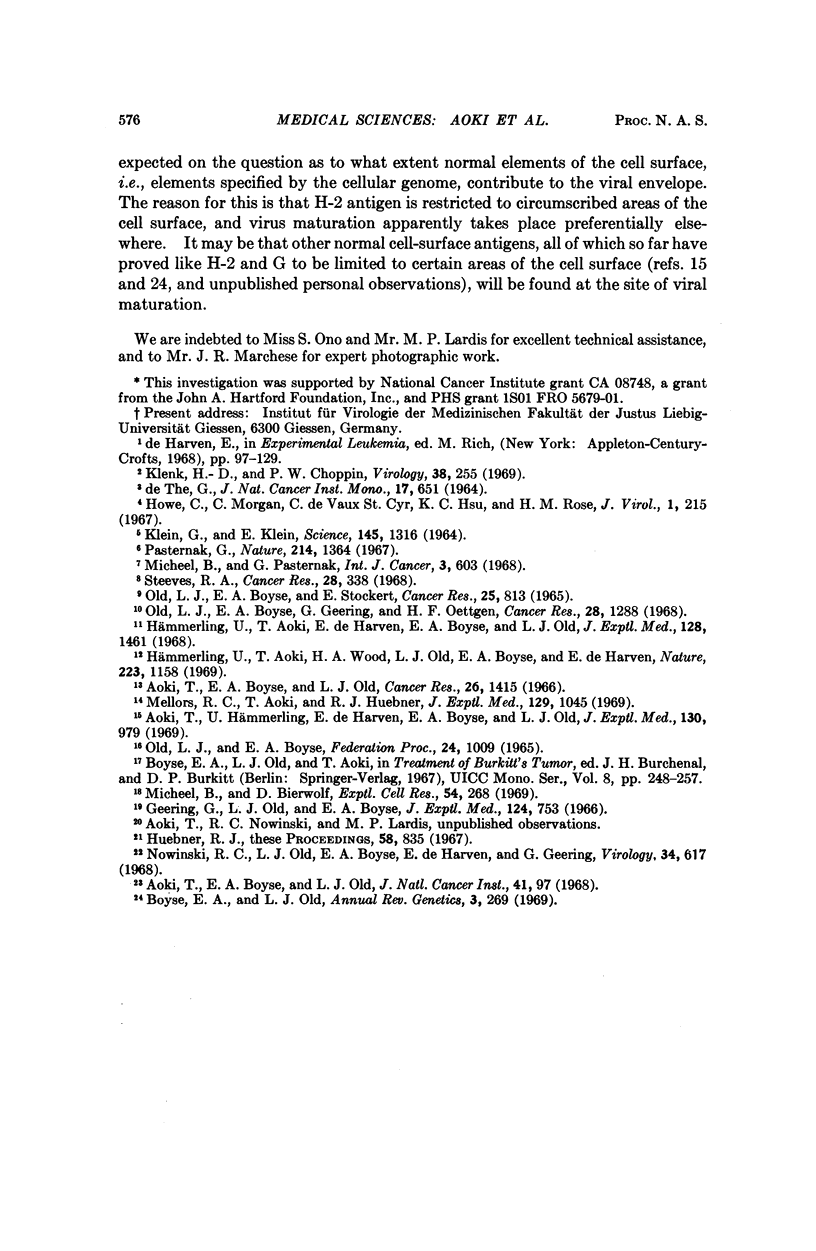
Images in this article
Selected References
These references are in PubMed. This may not be the complete list of references from this article.
- Aoki T., Boyse E. A., Old L. J. Occurrence of natural antibody to the G (gross) leukemia antigen in mice. Cancer Res. 1966 Jul;26(7):1415–1419. [PubMed] [Google Scholar]
- Aoki T., Boyse E. A., Old L. J. Wild-type Gross leukemia virus. II. Influence of immunogenetic factors on natural transmission and on the consequences of infection. J Natl Cancer Inst. 1968 Jul;41(1):97–101. [PubMed] [Google Scholar]
- Aoki T., Hämmerling U., De Harven E., Boyse E. A., Old L. J. Antigenic structure of cell surfaces. An immunoferritin study of the occurrence and topography of H-2' theta, and TL alloantigens on mouse cells. J Exp Med. 1969 Nov 1;130(5):979–1001. doi: 10.1084/jem.130.5.979. [DOI] [PMC free article] [PubMed] [Google Scholar]
- Geering G., Old L. J., Boyse E. A. Antigens of leukemias induced by naturally occurring murine leukemia virus: their relation to the antigens of gross virus and other murine leukemia viruses. J Exp Med. 1966 Oct 1;124(4):753–772. doi: 10.1084/jem.124.4.753. [DOI] [PMC free article] [PubMed] [Google Scholar]
- Howe C., Morgan C., de Vaux St Cyr C., Hsu K. C., Rose H. M. Morphogenesis of type 2 parainfluenza virus examined by light and electron microscopy. J Virol. 1967 Feb;1(1):215–237. doi: 10.1128/jvi.1.1.215-237.1967. [DOI] [PMC free article] [PubMed] [Google Scholar]
- Huebner R. J. The murine leukemia-sarcoma virus complex. Proc Natl Acad Sci U S A. 1967 Sep;58(3):835–842. doi: 10.1073/pnas.58.3.835. [DOI] [PMC free article] [PubMed] [Google Scholar]
- Hämmerling U., Aoki T., Wood H. A., Old L. J., Boyse E. A., de Harvin E. New visual markers of antibody for electron microscopy. Nature. 1969 Sep 13;223(5211):1158–1159. doi: 10.1038/2231158a0. [DOI] [PubMed] [Google Scholar]
- Hämmerling U., Aoki T., de Harven E., Boyse E. A., Old L. J. Use of hybrid antibody with anti-gamma-G and anti-ferritin specificities in locating cell surface antigens by electron microscopy. J Exp Med. 1968 Dec 1;128(6):1461–1473. doi: 10.1084/jem.128.6.1461. [DOI] [PMC free article] [PubMed] [Google Scholar]
- KLEIN G., KLEIN E. ANTIGENIC BEHAVIOR OF MOLONEY LYMPHOMAS: INDEPENDENCE OV VIRUS RELEASE AND IMMUNOSENSITIVITY. Science. 1964 Sep 18;145(3638):1316–1317. doi: 10.1126/science.145.3638.1316. [DOI] [PubMed] [Google Scholar]
- Klenk H. D., Choppin P. W. Lipids of plasma membranes of monkey and hamster kidney cells and of parainfluenza virions grown in these cells. Virology. 1969 Jun;38(2):255–268. doi: 10.1016/0042-6822(69)90367-5. [DOI] [PubMed] [Google Scholar]
- Mellors R. C., Aoki T., Huebner R. J. Further implication of murine leukemia-like virs in the disorders of NZB mice. J Exp Med. 1969 May 1;129(5):1045–1062. doi: 10.1084/jem.129.5.1045. [DOI] [PMC free article] [PubMed] [Google Scholar]
- Micheel B., Bierwolf D. Demonstration of Graffi virus-induced surface antigens of leukemia cells by indirect immunoferritin technique. Exp Cell Res. 1969 Feb;54(2):268–271. doi: 10.1016/0014-4827(69)90249-3. [DOI] [PubMed] [Google Scholar]
- Micheel B., Pasternak G. Immunologic studies on Graffi-virus-infected spontaenous Gross leukemia of AKR mice. Int J Cancer. 1968 Sep 15;3(5):603–613. doi: 10.1002/ijc.2910030509. [DOI] [PubMed] [Google Scholar]
- Nowinski R. C., Old L. J., Boyse E. A., de Harven E., Geering G. Group-specific viral antigens in the milk and tissues of mice naturally infected with mammary tumor virus or Gross leukemia virus. Virology. 1968 Apr;34(4):617–629. doi: 10.1016/0042-6822(68)90083-4. [DOI] [PubMed] [Google Scholar]
- Old L. J., Boyse E. A., Geering G., Oettgen H. F. Serologic approaches to the study of cancer in animals and in man. Cancer Res. 1968 Jul;28(7):1288–1299. [PubMed] [Google Scholar]
- Old L. J., Boyse E. A., Stockert E. The G (Gross) leukemia antigen. Cancer Res. 1965 Jul;25(6):813–819. [PubMed] [Google Scholar]
- Pasternak G. Differentiation between viral and new cellular antigens in Graffi leukaemia of mice. Nature. 1967 Jun 24;214(5095):1364–1365. doi: 10.1038/2141364a0. [DOI] [PubMed] [Google Scholar]
- Steeves R. A. Cellular antigen of Friend virus-induced leukemias. Cancer Res. 1968 Feb;28(2):338–342. [PubMed] [Google Scholar]



